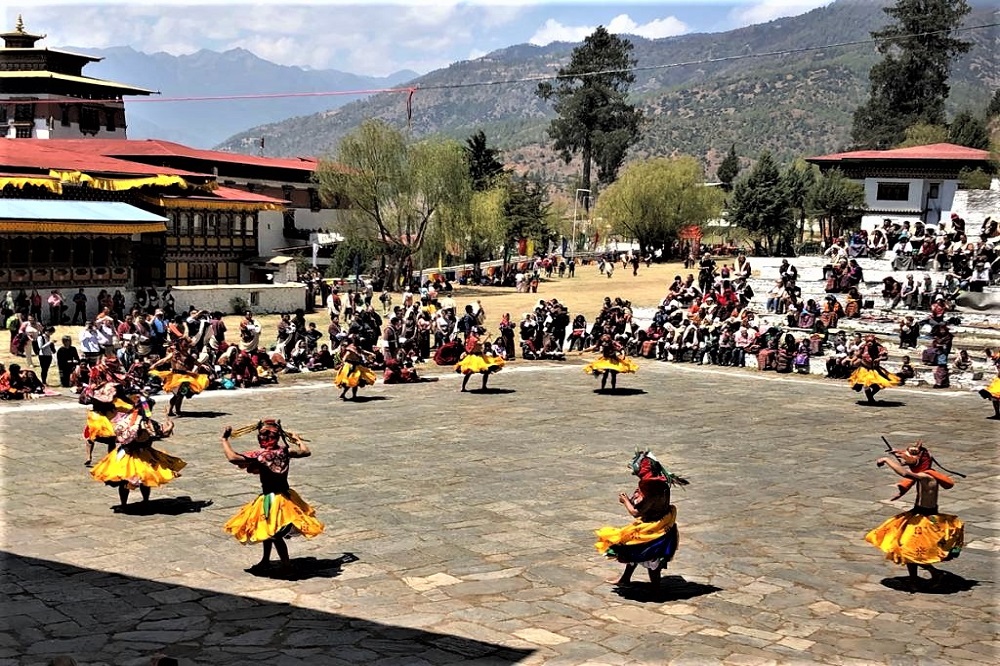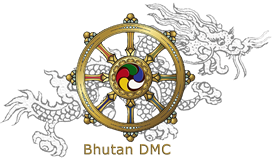Paro Tshechu – The most remarkable festival of Bhutan held at historic Rinpung Dzong with a display of large Thanka (religious picture scroll), sacred symbolic dances performed by monks.

Paro Tshechu (festival) is one of the most popular as well as most spectacular festivals of Bhutan, this takes place at famous Rinpung Dzong in Paro during spring season. The celebration commemorates important teachings and life events of the Guru Padsambhava – ‘one who was born from lotus flower’, an 8th century Buddhist scholar who popularized Buddhism in Bhutan. During the festival Bhutanese gather together at the Rinpung Dzong (Fortresses cum monastery) where elaborate mask dances and traditional Bhutanese dances are performed by trained monks and the local artists. These events have deep religious and mythological significance. It is also a time when the Bhutanese socialize, and the atmosphere of pomp and gaiety takes over the otherwise calm and quiet country. The 17th century festival is so significant it also attracts large numbers of spectators from around the world. The major highlight of Paro Tsechu is the unfurling of the silk Thangkha – so large that it covers the facade of an entire building and is considered one of the most sacred blessings in the whole of Bhutan. The ‘Thangkha, known in Bhutan as a ‘thongdroel’ is a religious picture scroll, and is only exhibited for a few hours at daybreak on the final day of the festival enabling the people to obtain its blessing.
Some of the highlights of the festivals are …
Shinje Yab Yum : Dance of the Lord of Death and his Consort
Durdag : Dance of the Lords of the Cremation Grounds
Zshana : Dance of the Black Hats
Degye : Dance of the eight kinds of Spirits
Religious Songs (Chhoshey) wearing long black skirt, yellow shirt, folded brown coat, felt boots, a circular head-dress and a sword.
Dance of the Terrifying Deities (Tungam)
Shawa Shachhi - Lencham : Dance of the Stag and the Hounds
Dance of the four Stags (Sha Tsam)
Dance of the Judgement of the Dead (Raksha Mangcham)
Unfurling of Thongdrol early in the morning and a Shugdrel ceremony performed by monks (closing ceremony on last day).
HOTELS IN THIMPHU
HOTELS IN PUNAKHA & WANGDUE
HOTELS IN GANGTEY
HOTELS IN TRONGSA
HOTELS IN BUMTHANG
HOTELS IN MONGAR
HOTELS IN TRASHIGANG
HOTELS IN SAMDRUP JONGKHAR
HOTELS IN PHUENTSHOLING
HOTELS IN HAA
HOTELS IN GELEPHU
HOTELS IN ZHEMGANG
RESTAURANTS IN PARO
RESTAURANTS IN THIMPHU
RESTAURANTS IN PUNAKHA
TOUR ITINERARIES
TREKKING ITINERARIES
SPECIAL INTERESTS TOURS
UNIQUE FESTIVALS & FAIRS
BLOG


